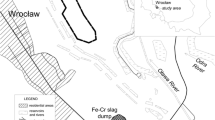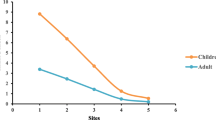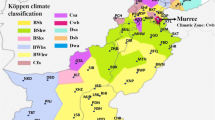Abstract
In order to understand the factors causing variation of lead and cadmium accumulation in tissues of feral pigeons in Seoul and Ansan, Korea, we investigated their age, food items (crop and gizzard contents) as well as environmental factors such as soil, atmosphere, and local traffic density. The results indicate that concentrations of Pb and Cd were highly increased in the order of eggs < chicks < adults. In food analysis, supplementary foods (rice, small stones, domestic scraps, cements, hairs, Styrofoam, etc.) could be considered as factors considering the Pb concentration differences. Concentrations of Cd in foodstuffs, the proportion of crop contents as their major foods could have an influence on the difference of Cd levels from a nutritional viewpoint. The Pb levels in gizzard contents and soil had an effect on the tissue accumulations, these were associated with the volume of vehicular traffic. However, we could not find any differences of Cd concentrations in gizzard contents and soil, although there were significantly different Cd accumulations in target organs of adult pigeons between the study areas. The Pb and Cd levels in tissues did not correspond to atmospheric metal levels.
Similar content being viewed by others
References
Ansan.: 2001, Daily report of traffic volume in Ansan City, Korea.
Antonio-Garćia, M. T., Martimez-Conde, E. and Corpas-Vazquez, I.: 1988, ‘Lead levels of feral pigeons (Columba livia) from Madrid (Spain)’, Environ. Poll. 54, 89–96.
Beyer, W. N., Connor, E. E. and Gerould, S.: 1994, ‘Estimates of soil ingestion by wildlife’, J. Wildlife Manage. 58, 375–382.
Burger, J. and Gochfeld, M.: 1993, ‘Lead and cadmium accumulation in eggs and fledgling seabirds in the New York Bight’, Environ. Toxicol. Chem. 12, 261–267.
Burger, J. and Gochfeld, M.: 2000, ‘Metals in albatross feathers from Midway Atoll: influence of species, age, nest location’, Environ. Res. Sec. A. 82, 207–221.
Dip, R., Stieger, P., Deplazes, P., Hegglin, D., Müller, U., Dafflon, O., Koch, H., and Naegeli, H.: 2001, ‘Comparison of heavy metal concentrations in tissues of red foxes from adjacent urban, suburban, and rural areas’, Arch. Environ. Contam. Toxicol. 40, 551–556.
Elliot, J. E., Scheuhammer, A. M., Leighton, F. A. and Pearce, P. A.: 1992; ‘Heavy metal and metallothionein concentrations in Atlantic Canadian seabirds’, Arch. Environ. Contam. Toxicol. 22, 63–73.
Gochfeld, M.: 1997; ‘Spatial patterns in a bioindicator heavy metal and selenium concentration in eggs of herring gulls (Larus argentatus) in the New York Bight’, Arch. Environ. Contam. Toxicol. 33, 63–70.
Honda, K., Lee, D. P. and Tatsukawa, R.: 1990, ‘Lead poisoning in swans in Japan’, Environ. Poll. 65, 209–218.
Hui, C. A. and Beyer, W. N.: 1998, ‘Sediment ingestion of two sympatric shorebird species,’ Sci. Tot. Environ. 224, 227–233.
Hutton, M. and Goodman, G. T.: 1980, ‘Metal contamination of feral pigeons Columba livia from London area: Part I-Tissue accumulation of lead, cadmium and zinc’, Environ. Poll. (A). 22, 207–217.
Hutton, M.: 1980, ‘Metal contamination of feral pigeons Columba livia from London area: Part II-Biological effects of lead exposure’, Environ. Poll. (A). 22, 281–293.
Hutton, M.: 1983, ‘The effects of environment lead exposure and in vitro zinc on tissue α-aminolevulinic acid dehydratase in urban pigeons’, Comp. Biochem. Physiol. 74C, 441–446.
Janiga, M., Blanka, M., Monika, B. O. and Gabriela, Ď.: 1990, ‘Significant of concentrations of lead, cadmium, and iron in the plumage of the feral pigeon’, Arch Environ. Contam. Toxicol. 19, 892–897.
Janiga, M. and Žemberyová, M.: 1998, ‘Lead concentration in the bones of the feral pigeons (Columba livia): sources of variation relating to body condition and death’, Arch. Environ. Contam. Toxicol. 35, 70–74.
Jeng, S. L., Lee, S. J., Liu, Y. F., Yang, S. C. and Liou, P. P.: 1997, ‘Effect of lead ingestion on concentrations of lead in tissues and eggs of laying Tsaiya ducks in Taiwan’, Poult. Sci. 76, 13–16.
Jenkins, C.: 1975, ‘Use of the feral pigeon (Columba livia) to monitor atmospheric lead pollution’, C.R. Acad. Sci. 281(D), 1187–1189.
Johnston, R. F. and Janiga, M.: 1995, Feral Pigeons (Columba livia), Oxford University Press, New York.
Johnston, M. S., Pluck, H., Hutton, M. and Moore, G.: 1982, ‘Accumulation and renal effects of lead in urban populations of feral pigeons, Columba livia’, Arch. Environ. Contam. Toxicol. 11, 761–767.
Kim, K. H., Kim, D. S., and Lee, T. J.: 1997, ‘The temporal variabilities in the concentrations of airborne lead and its relationship to aerosol behavior’, Atmos. Environ. 31, 3449–3458.
Kim, J. S., Han, S. H., Lee, D. P. and Koo, T. H. 2001, ‘Heavy metal contamination of feral pigeons Columba livia by habitat in Seoul’, Kor. J. Ecol. 24(5), 303–307.
Lee, D. P., Honda, K., Tatsukawa, R. and Won, P. O.: 1989, ‘Distribution and residue level of mercury, cadmium and lead in Korean birds’, Bull. Environ. Contam. Toxicol. 43, 550–555.
Lee, D. P.: 1989, ‘Heavy Metal Accumulation in Birds: Use of Feathers as Monitoring without Killing’, Ph. D. Thesis, Ehime Uni., Matsuyama, Japan.
Loranger, S., Demers, G., Kennedy, G., Forget, E. and Zayed, J.: 1994, ‘The Pigeons (Columba livia) as a monitor for manganese contamination from motor vehicles’, Arch. Environ. Contam. Toxicol. 27, 311–317.
Ministry of Environment & National Ministry of Environmental Research: 1998–2000, Monthly Report of Air Quality 1998–2000, Korea.
Ministry of Environment: 2001, Yearly Report of Soil Quality 2000, Korea.
Nybø, S., Fjeld, P. E., Jerstad, K. and Nissen, A.: 1996, ‘Long-range air pollution and its impact on heavy metal accumulation in dippers Cinclus cinclus in Norway’, Environ. Poll. 94(1), 31–38.
Nyholm, N. E. I.: 1998, ‘Influence of heavy metal exposure during different phases of the ontogeny on the development of pied flycatchers, Ficedula hypoleuca, in natural populations’, Arch. Environ. Contam. Toxicol. 35, 632–637.
Ohi, G., Seki, H., Akiyama, K. and Yagyu, H.: 1974, ‘The pigeon, a sensor of lead pollution’, Bull. Environ. Contam. Toxicol. 12(1), 92–98.
Ohi, G., Seki, H., Minowa, K., Osawa, M., Mizoguchi, I. and Sugimori, F.: 1981, ‘Lead pollution in Tokyo: The pigeon reflects its amelioration’, Environ. Res. 26, 125–129.
Richards, M. P.: 1996, ‘Trace mineral metabolism in the avian embryo’, Poult. Sci. 76, 152–164.
Scheuhammer, A. M.: 1987; ‘Reproductive effects of chronic, low-level dietary metal exposure in birds’, Trans. NA Wildl. Natur. Resour. Conf. 52, 658–664.
Schilderman, P. A., Hoogewerff, J. A., Schooten, F. J., Maas, L. M., Moonen, E. J., van Os, B. J., van Wijne, J. H. and Kleinjans, J. C.: 1997, ‘Possible relevance of pigeons as an indicator species for monitoring air pollution’, Environ. Heal. Persp. 105, 322–330.
Sell, J. L.: 1975, ‘Cadmium and the laying hen: apparent absorption, tissue distribution and virtual absence of transfer into eggs’, Poult. Sci. 54, 1674–1678.
Seoul: 2000, Daily Report of Traffic Volume in Joong-goo, Seoul, Korea.
Tansy, M. F. and Roth, R. P.: 1970, ‘Pigeons: a new role in air pollution’, J. Air Pollut. Control. Assess. 20, 307–309.
Thompson, D. R.: 1990, ‘Metal Levels in Marine Vertebrates’, in R. W. Furness and P. S. Rainbow (eds), Heavy Metals in the Marine Environment, CRS Press. New York, 143–182.
White, D. H. and Finley, M. T.: 1978, ‘Uptake and retention of dietary cadmium in mallard ducks’, Environ. Res. 17, 53–59.
Author information
Authors and Affiliations
Corresponding author
Rights and permissions
About this article
Cite this article
Nam, DH., Lee, DP. & Koo, TH. Factors Causing Variations of Lead and Cadmium Accumulation of Feral Pigeons (Columba livia). Environ Monit Assess 95, 23–35 (2004). https://doi.org/10.1023/B:EMAS.0000029897.90755.e6
Issue Date:
DOI: https://doi.org/10.1023/B:EMAS.0000029897.90755.e6




